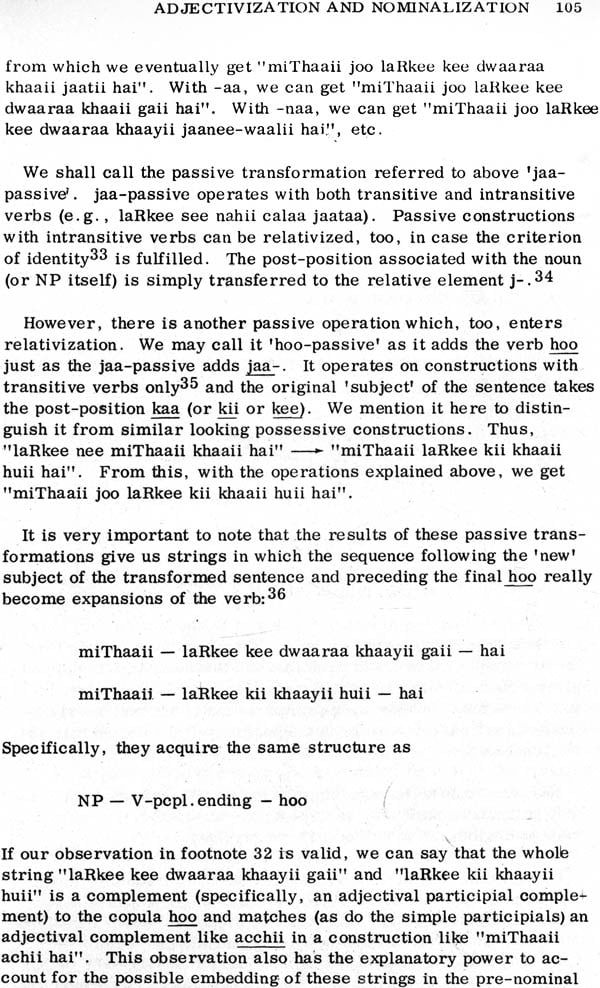
The Structure of the Noun Phrase in English and Hindi
Book Specification
| Item Code: | IDD533 |
| Author: | MANINDRA K. VERMA |
| Publisher: | Motilal Banarsidass Publishers Pvt. Ltd. |
| Language: | English |
| Edition: | 1971 |
| Pages: | 213 |
| Cover: | Hardcover |
| Other Details | 9.8" X 6.5" |
| Weight | 590 gm |
Book Description
About the Book:
The development of the transformational approach to the theory of language structure in the past decade has stimulated new ways of looking at a number of linguistic questions. One such important area may be considered the comparative study of the surface structure behavior of substantive universals. This book seeks to provide an account of the structure of the noun phrase in English and Hindi within such a framework. It provides detailed separate analysis of the noun phrases in the two languages, with a number of new proposals, and investigates the nature of operations that characterize them and yield different kinds of surface structures. The book should prove useful for the study of English and Hindi syntax as well as for devising pedagogical grammars.
About the Author:
The author, Dr. Manindra K. Verma, is Associate professor of Linguistic in the Department of Indian Studies at the University of Wisconsin, Madison, U.S.A., and has taught English and Linguistics at various institutions in India.
This book originated as a dissertation for a doctoral degree at the University of Michigan and was prepared during 1965-66. The work, in its overall presentation, seeks to give a comparative account of the structure of the noun phrase in English and Hindi but is not intended to be a 'contrastive' study. The preoccupation has been of a more fundamental nature, namely, discovering the characteristic structural 'habits' of the two systems in respect of their manipulation of the constituents of the phrase to obtain various kinds of strings in the surface structure. In view of the current preoccupation with linguistic universals in the deep structure, some of the conclusions drawn in the work may be of some interest. The English and Hindi noun phrases are found to have a good deal of similarity in their overall categorical structure with similar co- occurrence restrictions even though they show considerable differences in the strings that actually occur. This turns out to be accountable in terms of the behaviour of embedded structures and the scope and nature of the transformational operations that can be carried out on them. Accordingly, there are such significant differences in the surface structure phenomena as, for example, the absence, in Hindi, of negative deter- miners, ’N + N' phrases, and the kind of restrictions that English has on the pre-nominal occurrence of participial modifier .
Apart from attempting to systematize the various known aspects of the structure of the English noun phrase, new proposals have been made (not reported until the preparation of the work began) in regard to the treatment of the determiner system of English (particularly, the articles and 'predeterminer '), the behaviour of the negative in noun phrases with different degrees of 'specificity', the treatment of pronouns as derivative elements rather than basic formatives, the fusion of the genitive with the determiner of the embedding noun phrase, the restrictions on the occurrence of pre-nominal participial modifiers in terms of features which may be called stata1' and ’actional’, etc. The analysis of the Hindi noun phrase presented here is almost entirely new, in its statement as well as the details. Some of the proposals found significant relate to the question of 'specificity' in the Hindi noun phrase in the absence of (overt) articles, limiters and limiter particles, the restriction on the occurrence of nouns as modifiers of nouns, etc. Recent thinking seems to indicate that some of these proposals can not only be a little better stated but also extended in their scope. A case in point is the treatment of Hindi limiters (specifically, the particles hii and bhii) which, it seems, not only function as scope-markers in the noun phrase but are also significantly related to the questions of definiteness, negation, and genericity in the sentence.
I wish to express my indebtedness to all those whose advice and teaching, over the years, contributed to the shaping of ideas that eventually made this work possible. In this regard, I would particularly like to mention Professors A.H. Marckwardt, O.L. Chavarria-Aguilar, J.C. Catford, K. L. Pike, and H.H. Paper. I have also profited from many fruitful discussions of English grammar with Carolyn Killean and Peter Fodale and of Hindi grammar with Bruce Pray. I am grateful to the University of Michigan for awarding a University Fellowship, successively for three years, which enabled me to pursue graduate study in linguistics.
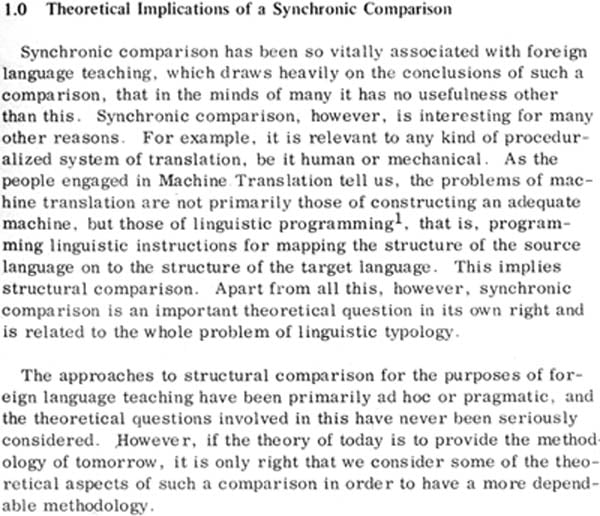
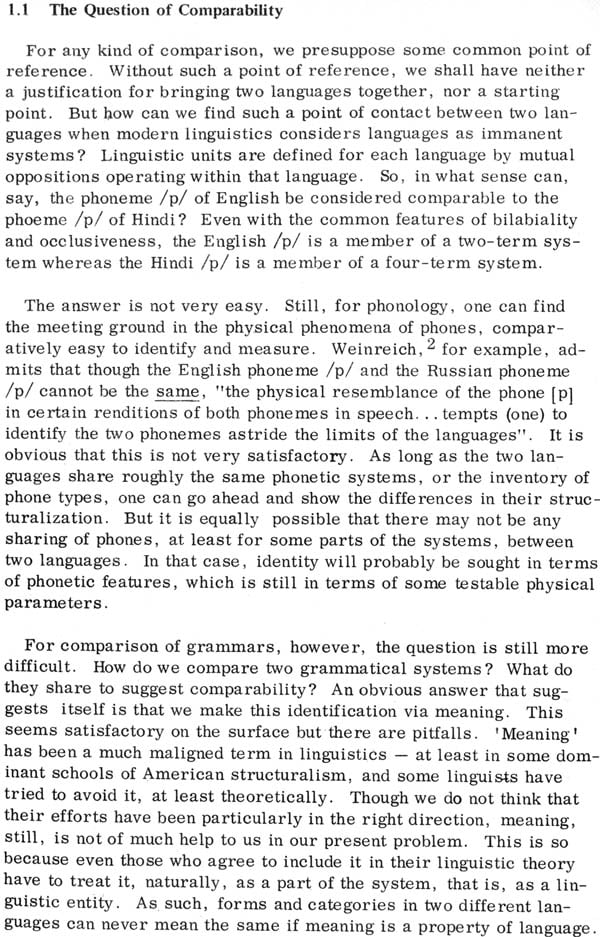
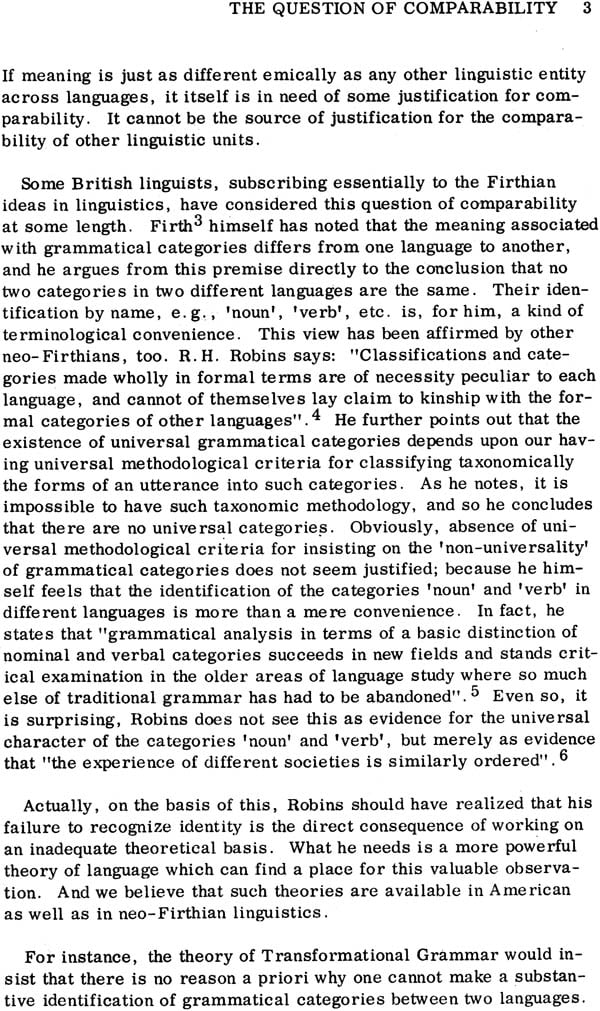
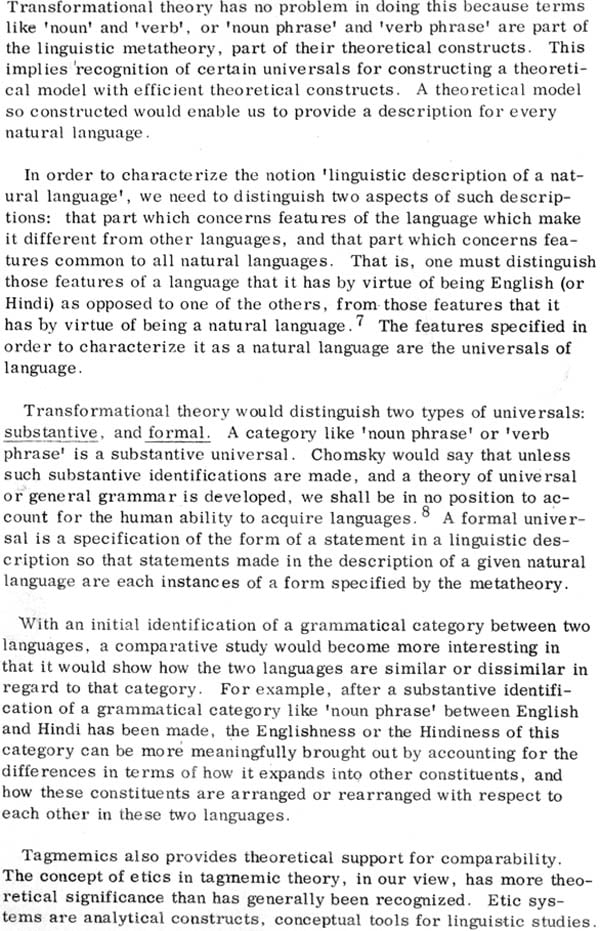
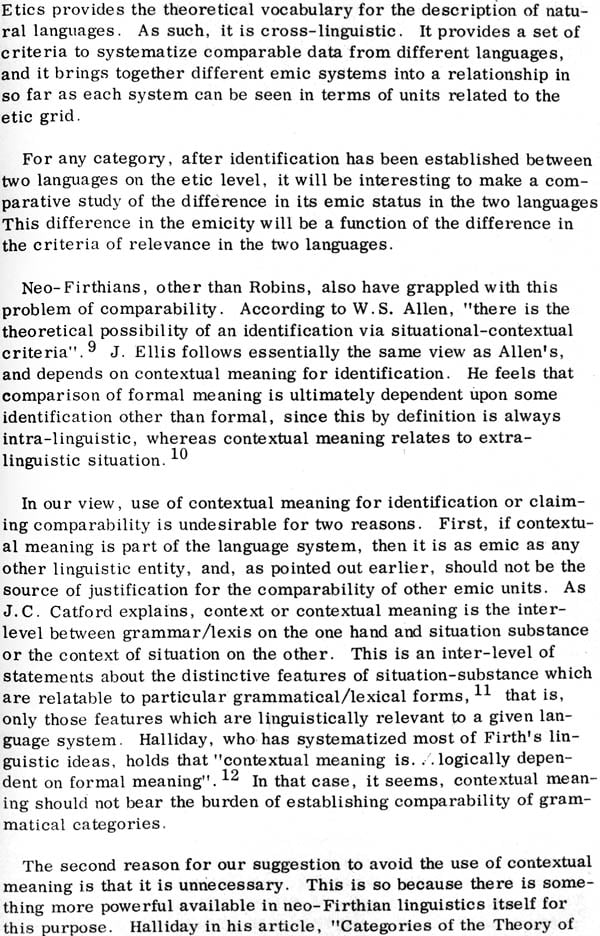

CONTENTS
- Introduction
1.0 Theoretical Implications of a Synchronic Comparison 1.1 The Question of Comparability 1.2 The Relationship of Equivalence - The English Noun Phrase
2.1 Proper Name 2.2 Appositive and Relative Clauses 2.3 The Determinate and the Indeterminate 2.4 Quantifiers - Numerals 2.5 Quantifiers - Enumeratives 2.6 The Category Specified 2.7 Quantifiers - Emphatics1 2.8 Quantifiers - Emphatics2 2.9 Limiters 2.10 Quantifiers - Emphatics3 2.11 Predeterminers 2.12 Negation in the Noun Phrase 2.13 The Constituent wh- 2.14 The Category Nom 2.15 Adjectivization and Nominalization - The Hindi Noun Phrase
3.1 The Indeterminate 3.2 The Determinate 3.3 The Constituent Aggregative 3.4 Quantifiers - Numerals 3.5 Quantifiers - Enumeratives 3.6 Limiters 3.7 Quantifiers - Emphatics. 3.8 The Category Nom 3.9 The Constituent wh- 3.10 Adjectivization and Nominalization - The Comparative Structure of the English and Hindi Noun Phrase
4.1 The Determinate and the Indeterminate 4.2 Limiters 4.3 Emphatics 4.4 Numerals, Multiplicatives, and Fractionals 4.5 The Constituent Aggregative 4.6 The Constituents wh-and Neg 4.7 The Category Nom 4.8 Adjectivization 4.8.1 Adjectives and Participial Modifiers 4.8.2 Nominal Modifiers 4.8.3 Possessive Modifiers 4.9 Nominalization - Conclusion
References
Click Here For More Books on the Hindi Language
